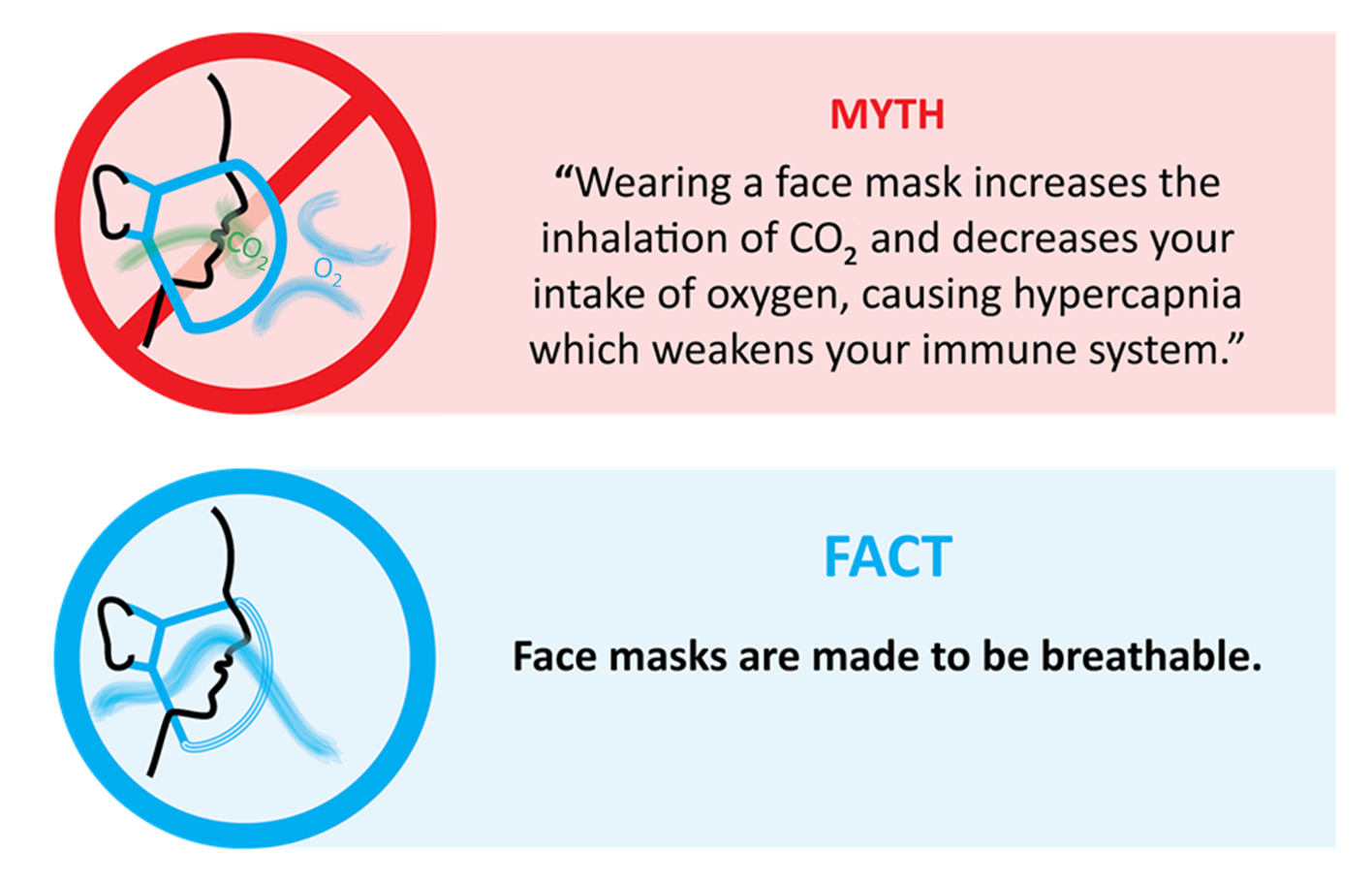In this guest post, our collaborators from the ROSE Project (Reusable Open Source Equipment) share the facts about face masks for COVID-19 and dispel common mask myths.
You may be asking yourself, do we even need face masks? Are they safe to wear? Let’s tackle some of the common myths about face masks that have popped up during the COVID-19 pandemic.

- Oxygen passes freely through masks because oxygen particles are incredibly tiny (0.0005 microns). You will not be deprived of oxygen by wearing a mask. Masks just force the air to flow through a filter to catch viruses, bacteria and pollutants. The extra force required may mean that some people will have to work a bit harder to breathe.
- Medical-grade face masks are designed and tested to make sure that air actually passes through the masks. When you breath out, the carbon dioxide in your breath will pass through the mask because carbon dioxide is also incredibly tiny (0.00065 microns). Medical-grade masks are carefully tested to be both effective and safe for human use.
- Your immune system will still protect you while you wear a mask. The immune system is complicated and has many ways to regulate itself and make sure it’s working properly. It takes a LOT to completely shut down your immune system. Having to breathe more heavily for a short period of time is not enough to shut down your body’s ability to fight infections.


- The job of a face mask is to catch and trap viruses on the outside surface. The virus gets stuck in the mask and can’t go through the mask when you breathe.
- Droplets from someone with the virus who is speaking, coughing or sneezing close to you can land on your mask. If you touch these droplets on the surface of your mask and then touch any other part of your face, like your eyes, you can infect yourself with COVID-19.

- Proper hand hygiene and physical distancing are the best ways to prevent the spread of COVID-19.
- There have been many studies during influenza pandemics and the SARS epidemic in the past 10 years, looking at the effectiveness of face masks. The research shows that wearing a mask can reduce the spread of viruses, as long as you are washing your hands before putting them on and washing your hands after taking them off.
- If you are using a reusable face mask, it needs to be washed after every use.
Simply put, face masks allow air to flow through the mask, trapping virus particles on the outside and preventing the spread of COVID-19. Proper hand hygiene before and after mask wearing is important, so make sure you wash your hands with soap for 20 seconds every time. Stay safe and healthy and please share these facts with your family and friends!
About the Author: The ROSE project team (Reusable Open Source Equipment), based out of Toronto, is developing a reusable mask design that meets medical standards. This will result in less waste and a more stable supply chain for masks. To learn more about the ROSE project, visit the website.


